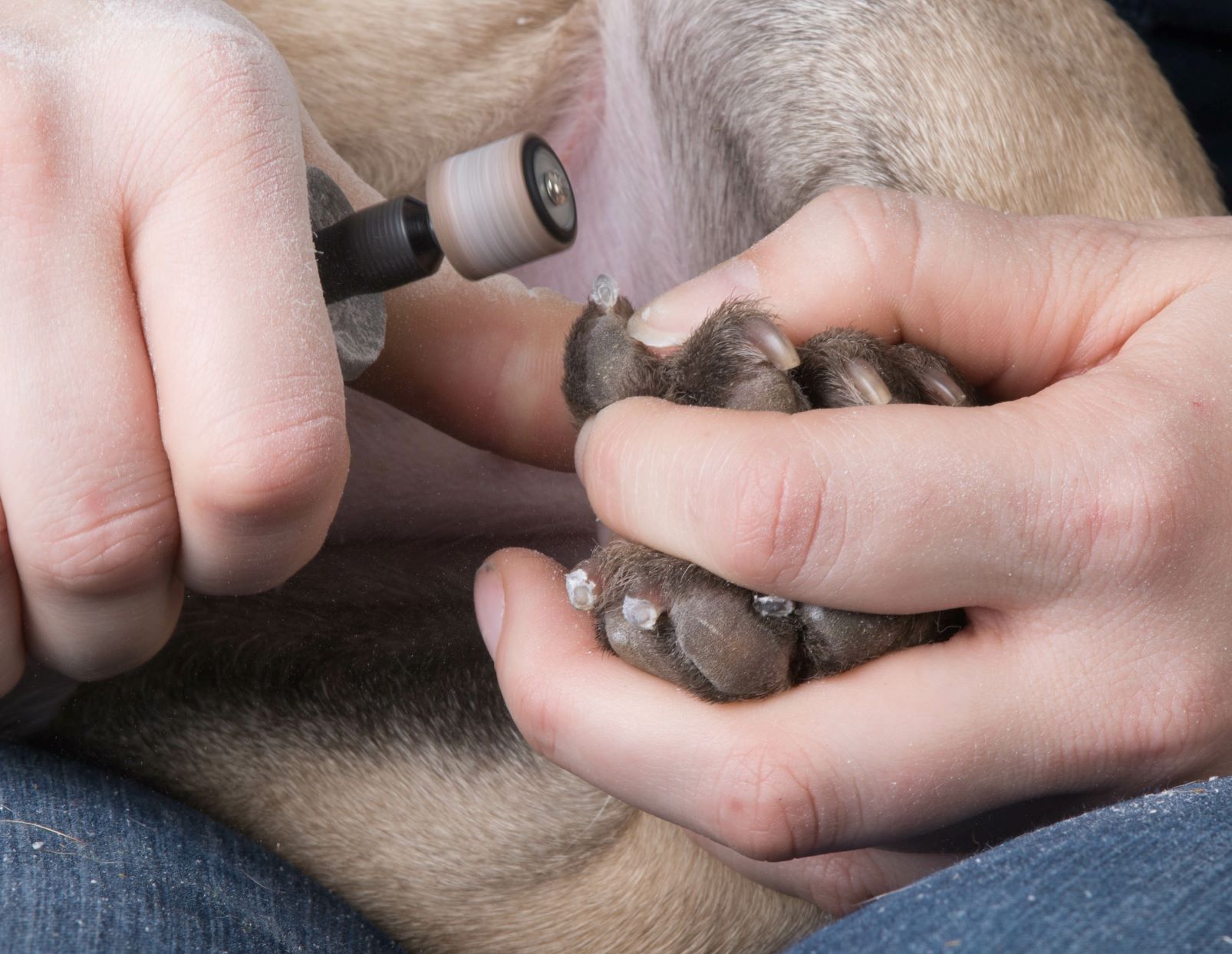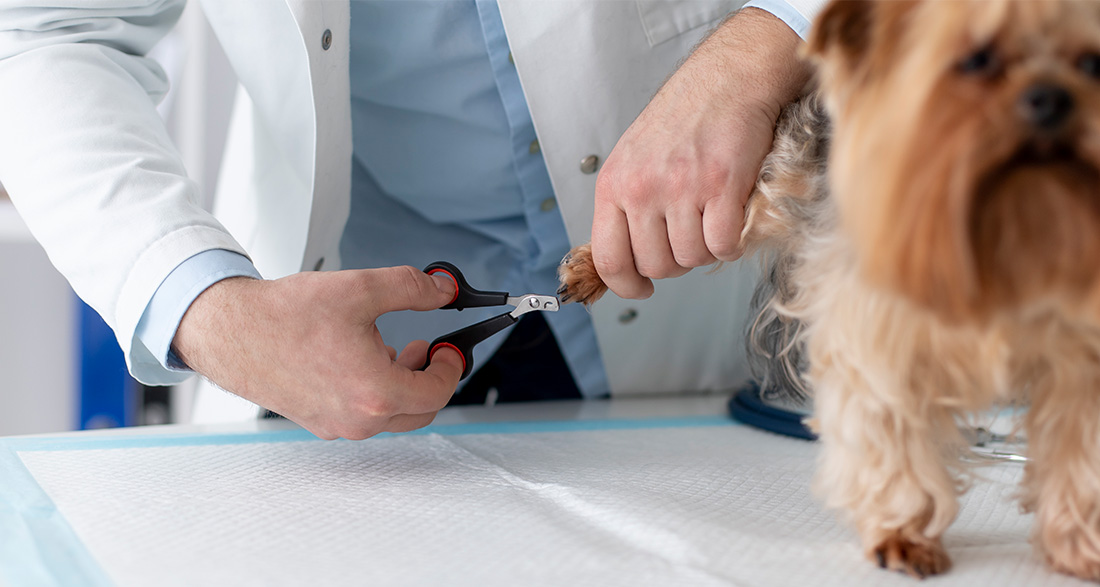Most dogs don’t enjoy having their nails trimmed. As soon as the nail clippers come out, many furry friends hide and react with panic. To prevent this and help your four-legged companion learn to relax during nail trimming, here are the most important tips and tricks.
What happens when nails are too long? Regularly checking and trimming your dog’s nails is crucial. If neglected, the following complications can arise:
- Long nails can break and bleed during play. If your dog’s too-long nails get caught on objects, he may tear the nail completely off, causing deep wounds if, for example, he scratches himself around the neck.
- Regular nail care is essential because blood vessels in the nail grow with the length. The longer the nails, the higher the likelihood of bleeding during trimming. Beyond a certain length, it becomes challenging to trim dog nails without complications.
- Dogs with long nails may find it uncomfortable, altering their gait and causing them to lift their paws more while walking. Over time, this can lead to joint damage, resulting in painful joint wear (arthritis) of the toe joints.
- If a nail grows into the adjacent toe, the skin can become severely inflamed. The paw may swell and become warm, causing pain with every movement. Bacteria can also lead to pus-filled swellings (abscesses).
How long should dog nails be?
Your dog’s nails should not or only slightly touch the ground when standing. If you hear a loud clicking sound when your dog walks on hard surfaces, it’s a sign that the nails are dragging across the ground during each step. This means you should trim your dog’s nails as soon as possible.
What is needed to trim dog nails?
To trim your furry friend’s nails, you’ll need one of the following tools: nail clippers or a nail grinder.
Nail clippers are more challenging for beginners to use compared to nail grinders. There’s a risk of trimming the nail too short.
With a nail grinder, you can approach the nail millimeter by millimeter.

To remove rough edges, you can also use a file. In case your dog bleeds a bit during nail trimming, have a clean tissue and a wound disinfectant ready.
How to trim dog nails correctly
Don’t underestimate the process of trimming dog nails. If nail care is not performed or done incorrectly, your dog may react painfully and become stressed. While you can always have a vet or a professional groomer trim your dog’s nails, the following guide will help you do it at home:
- Create a pleasant atmosphere before trimming your dog’s nails. Dogs quickly pick up on your nervousness. To keep your dog relaxed during nail trimming, speak to him calmly and get him into a comfortable position. Treats can help cheer up your dog.
- To prepare your dog for nail care, give the command “paw.” This lets him know you’ll be working on his paws, making him less startled if he feels a tug or a poke.
- Examine the paws and nails, including the spaces between the toes. If the nails are not pigmented, you can see the blood vessels inside. A flashlight can be helpful for illuminating the nail. If you can’t identify the vessels, don’t worry.
- Trim the nail about two to three millimeters below the blood vessel. Don’t forget the dewclaw. If you accidentally cut a blood vessel, use a tissue to stop the bleeding. Press the tissue firmly on the bleeding for several seconds to a few minutes. Afterward, disinfect the wound and monitor it for signs of infection in the following days.
- Praise your furry friend after nail care. Your dog will learn that nail trimming is a positive experience, making him more relaxed the next time.


